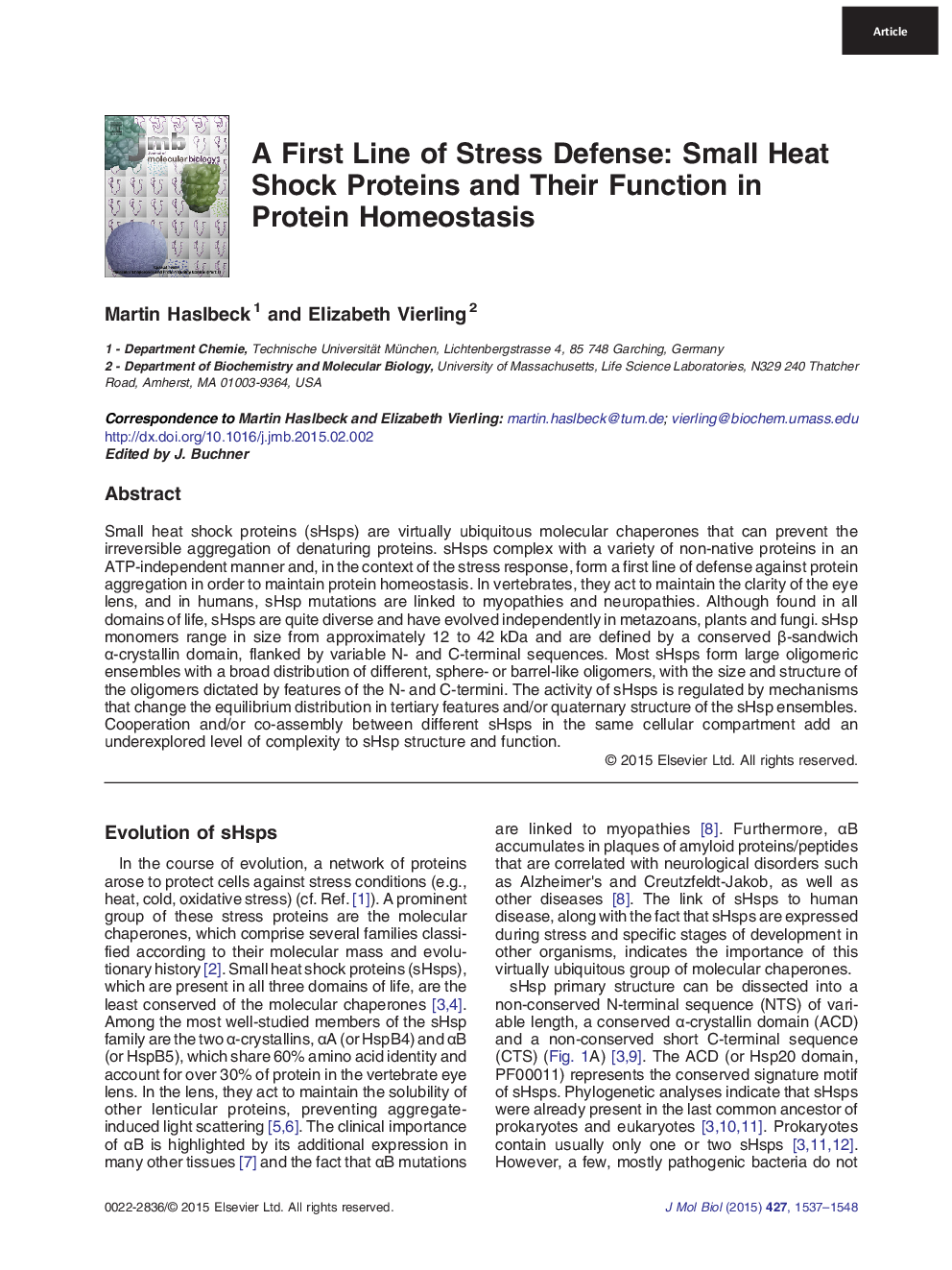| Article ID | Journal | Published Year | Pages | File Type |
|---|---|---|---|---|
| 2184532 | Journal of Molecular Biology | 2015 | 12 Pages |
•A signature of all sHsps is a core α-crystallin domain that has a β-sandwich structure.•Most sHsps form large oligomers built in different geometries from a dimeric substructure.•sHsps can bind and stabilize diverse non-native proteins to maintain protein homeostasis.•sHsps evolved independently in different eukaryotes, potentially reflecting diverse functions.•Oligomeric sHsps exist as dynamic ensembles that are likely critical to their chaperone function.
Small heat shock proteins (sHsps) are virtually ubiquitous molecular chaperones that can prevent the irreversible aggregation of denaturing proteins. sHsps complex with a variety of non-native proteins in an ATP-independent manner and, in the context of the stress response, form a first line of defense against protein aggregation in order to maintain protein homeostasis. In vertebrates, they act to maintain the clarity of the eye lens, and in humans, sHsp mutations are linked to myopathies and neuropathies. Although found in all domains of life, sHsps are quite diverse and have evolved independently in metazoans, plants and fungi. sHsp monomers range in size from approximately 12 to 42 kDa and are defined by a conserved β-sandwich α-crystallin domain, flanked by variable N- and C-terminal sequences. Most sHsps form large oligomeric ensembles with a broad distribution of different, sphere- or barrel-like oligomers, with the size and structure of the oligomers dictated by features of the N- and C-termini. The activity of sHsps is regulated by mechanisms that change the equilibrium distribution in tertiary features and/or quaternary structure of the sHsp ensembles. Cooperation and/or co-assembly between different sHsps in the same cellular compartment add an underexplored level of complexity to sHsp structure and function.
Graphical AbstractFigure optionsDownload full-size imageDownload high-quality image (137 K)Download as PowerPoint slide
